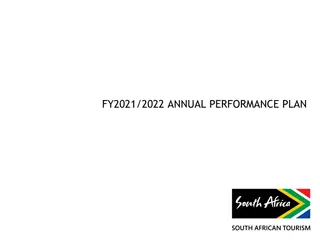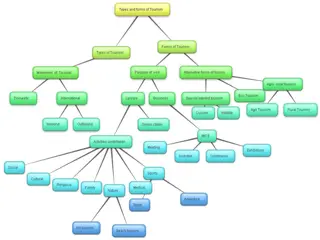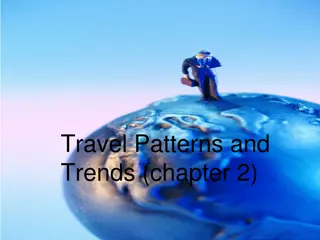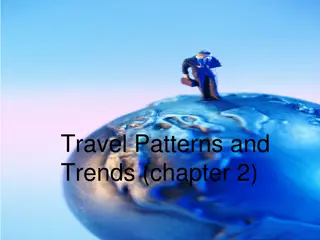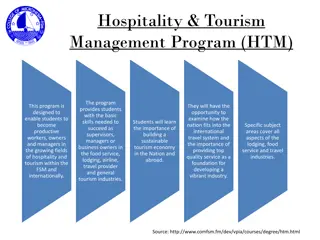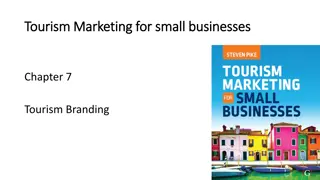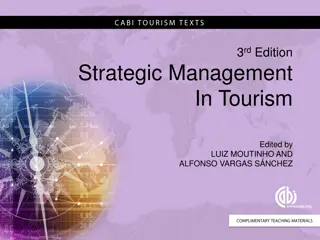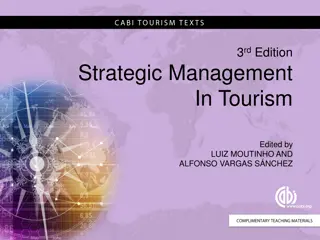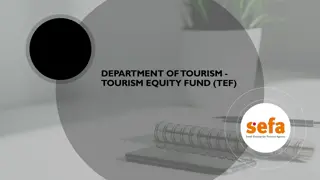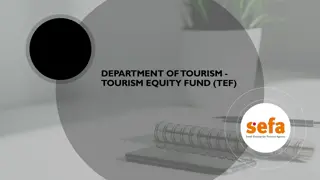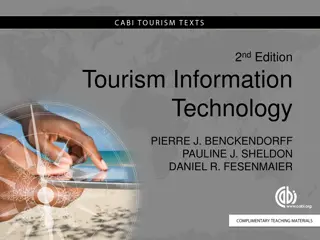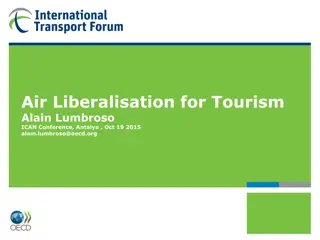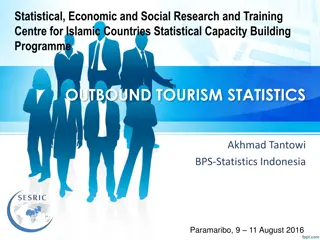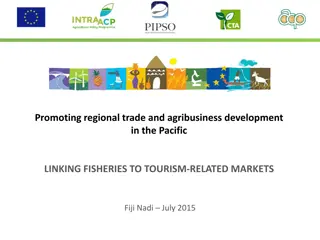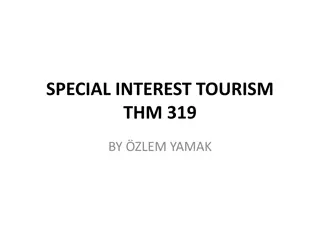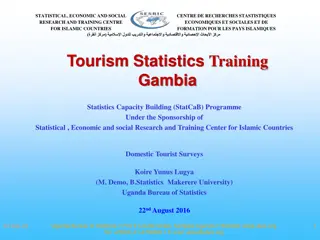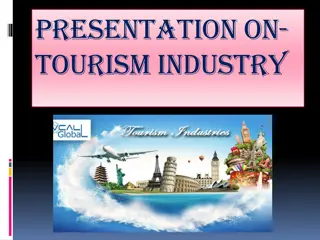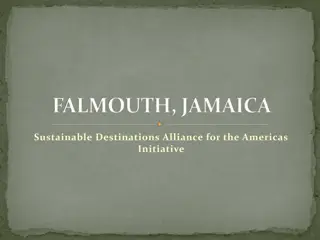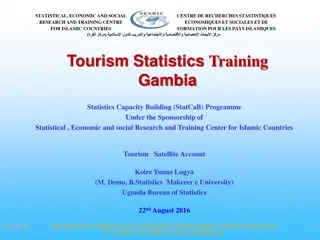Process-Based Management in Tourism: A Strategic Approach
Explore the principles of process-based management (PBM) in the tourism industry through the 3rd Edition of the book edited by Luiz Moutinho and Alfonso Vargas Sánchez. Learn about business processes, re-engineering, and how PBM can optimize operations and stakeholder satisfaction in tourism. Gain insights on applying process thinking, technology influences, and changes in PBM within tourism marketing. Discover the importance of rethinking business processes for dramatic improvements in performance metrics.
Download Presentation

Please find below an Image/Link to download the presentation.
The content on the website is provided AS IS for your information and personal use only. It may not be sold, licensed, or shared on other websites without obtaining consent from the author. Download presentation by click this link. If you encounter any issues during the download, it is possible that the publisher has removed the file from their server.
E N D
Presentation Transcript
3rd Edition Strategic Management In Tourism Edited by LUIZ MOUTINHO AND ALFONSO VARGAS S NCHEZ
CHAPTER 14 PROCESS-BASED MANAGEMENT IN TOURISM GEOFF SOUTHERN AND LUIZ MOUTINHO
LEARNING OBJECTIVES After studying this chapter you should be able to: know what is meant by a business process, the process-based management (PBM) and business process re-engineering (BPR); apply process thinking in travel and tourism; consider how the tourism futurecast and innovative technology influences PBM and BPR thinking; explain changes in PBM in tourism marketing (PBM2); understand relationship of the traditional functions of management. The cases - relate the concepts, theories and techniques of process thinking to tourism.
WHAT IS A PROCESS? A process, in short, is a system in operation to produce an output of higher value than the sum of its inputs. Business process definitions (among many): Definition 1 a collection of activities that takes one or more kinds of input and creates an output that is of value to the customer (Hammer and Champy, 1993) Definition 1 a set of logically related tasks performed to achieve a defined business outcome (Davenport and Short, 1990)
WHAT IS PBM? PBM - a management approach that governs the mindset and actions in an organization: how an organization manages its operations, aligned with, and supported by the vision, mission and values of the organization; the basis for decisions and actions. PBM in tourism industry - aholistic approach: not focused only on product/service quality; consider how each performance affects the tourism company - an amalgam of different processes; enable an organization to optimize and to satisfy needs of all stakeholders.
WHAT IS BPR? Re-engineering is the fundamental rethinking and radical design of business processes to achieve dramatic improvements in critical, contemporary measures of performance, such as cost, quality, service, and speed . Hammer and Champy (1993) Approaches: Hammer a big bang , the top down; technology - an enabler of change more incremental, continuous improvement within total quality management (TQM); technology - a driver of change Davenport
BPR IN TOURISM FOUR general recurring processes (Hammer and Champy, 1993): (1) concept to prototype (developing new products) (2)* prospect to order (3)* order to payment (4)* inquiry to resolution. Modification for organizations in tourism: 4 recurring activities (PRIMARY processes) A.informing potential customers of travel products ... relates to (2)* B.getting sales ... relates to (2)*, (3)*, (4)* C.delivering travel products ... relates to (3)*, (4)* D.coordinating activities 3 sub-activities (SECONDARY processes) Targeting past customers (CRM) ... the overlap between A and B Preparing customers for tour ... the overlap between B and C Developing service products ... the overlap between A and C
BPR UNDERLYING PRINCIPLES concentrating on processes and the change in mindset from specialist (knowledge-based) functional silos to cross-functional completion focusing on customers throughout the organization s supply chain Organisational boundaries - less and less important. One of the hallmarks of BPR: to work out what it really means to be customer-facing. Cross-functional management process: inter-departmental communication co-operation throughout a company
WHAT MAKES BPR HAPPEN? internal factors (e.g. new leadership) external factors (e.g. legal / market changes) changes in technology (e.g. Internet / GPS...) Top management sponsorship - important as an internal driver for BPR. It must be re-iterated - strategic support alone is inadequate to make the philosophy of PBM a success: the middle management and employees need to recognize their part in the process and take ownership of it for optimal results. Working towards a common goal - harmony across different work groups and departments.
IDENTIFYING A PROCESS-BASED TOURISM ORGANIZATION A process-based tourism organization - characteristics that make it instantly recognizable: see every interaction with a customer (tourist, traveller, ...) as a learning opportunity, develop and encourage flexible cross-functional teams, reward employees for increasing customer value, reward information sharing and knowledge transfer across functions and teams. Thinking tourism organizations with the holographic organization design: each interdependent part reflects the essence of the whole.
TOURISM FUTURECAST INFLUENCING PBM Tourism one of the most important economic sectors of the 21st century. PBM and BPR tools to improve tourism effectiveness, profitability and competitiveness. Business as usual in tourism should be changed! Right NOW tourism business must make sense of new technologies generational differences geopolitical shifts in power continued economic crises the needs of our planet... The business must adapt to people increasingly more demanding (main customers: tourists and travellers) where the pursuit of profit alone is no longer enough. There is needed A TOURISM INDUSTRY REVOLUTION !
Purpose of Significance More and more important questions are: WHY (would a tourist want to go) and HOW (would a tourist like to spend his holidays). The tourism in the future: more profound meaning for the industry, for destinations and the people who live there. 21st century tourism businesses have purpose creating meaning that goes beyond the work itself and the creation of profits a Purpose of Significance . Futurecasted social drivers, evolution of profiles of tourists and travellers and numerous ongoing and casted paradigm shifts should be considered as highly important inputs of an organization s / a company s PBM and for BPR...
INNOVATIVE TECHNOLOGIES IMPACT BPR The future of tourism using new technologies implies a broad range of possibilities, from augmented reality, real-time translation, travel-guide communication... to biometrics, etc. Innovative technology enables and helps to continuously obtain the pulse of the tourist: to understand your tourist by capturing their real feelings (what they want, expect and experience) in real-time! to create, design, deliver and measure emotional experiences that go beyond mere simple tourist satisfaction while radically changing people / employees performance measurement...
PBM IN TOURISM MARKETING Two types of companies: those with a marketing department, and those with a marketing soul. Process-based marketing management (PBM2) involves: changes in the genetic foundation of the company, company cells (cross-cell functional teams) vs. previous silo mentality cells, integrated marketing (integration, agility and flexibility), classic marketing department's functions dispersed across the organization. Key common traits of marketplace leaders are: operational excellence and focus in innovation.
EXPERIMENTATION IS THE NEW PLANNING No two people will connect to the tourism brand in the same way, for the same reasons, through the same story or via the same channels Technology is chaotic. It affects every industry, often in ways that are difficult (if not impossible) to anticipate... Let s be honest: there is no idea what s going to happen to the tourism industry! That s why should be BUILD ORGANISATION INTO AN ENGINE OF POSSIBILITY. So, what is needed is an evolving portfolio of strategic experiments.
EXAMPLES OF BPR IN TOURISM Online reservations Malabar Beach Hotel easyJet/hotels/cruises Hong Kong pan-Pearl River Delta (PRD) tourism market
IN SHORT and Discussion Issues (1/2) BPR fundamental rethinking and radical design of business processes to achieve dramatic improvements in contemporary measures of performance (cost, quality, service, and speed) encompasses ideas from e.g. systems thinking, TQM and supply (and value) chain management a holistic approach to processes & focus on customers. generic business processes in tourism are identified: 4 primary (informing potential customers of travel products; getting sales; delivering travel products; coordinating activities) + 3 secondary (overlapping / targeting past customers; preparing customers; developing service products). Result: cross-functional business completion.
IN SHORT and Discussion Issues (2/2) Tourism futurecast and innovative technology unavoidable inputs for PBM and BPR in tourism organizations /companies of today and in the future. BPR in tourism marketing and planning processes - significant changes with flexibility, fluidity and uncertainty as the most important characteristics.














